Industry emerges as winner, as growth returns to fore - The Noel D'Cunha Sunday Column
With the market opening up after a two-year slump of the pandemic, there is a sense of optimism among the printing fraternity. There are issues and concerns, of course, but the overall outlook is that of hope.
Noel D’Cunha and Dibyajyoti Sarma report
28 Aug 2022 | By Noel D'Cunha
The industry celebrated Paper Day on 1 August, and on that day, paper stocks were looking good. Most of them were up 4-10%. Our paper stock app showed that ITC was trading at Rs 305.10 (paper/paperboard capacity of 9-lakh MTPA and a pulp capacity of 4.5-lakh MTPA); JK Paper was trading at Rs 376.25 (paper and board capacity of 6.25-lakh MTPA); West Coast Paper was trading at Rs 493.70 (paper capacity of 3.5-lakh MTPA); and Seshasayee Paper and Boards was trading at Rs 227.90 with the highest ever annual production at 2.12-lakh tonnes.
The outlook for the first quarter of FY 2022-23 is expected to be positive with continued higher pent-up demand for printing and writing grade papers. Demand for boards is expected to remain strong throughout the financial year.
What’s worrisome for print firms and converters is that paper mills have announced the next round of price increases.
Capacity utilisation
We mapped 234 firms across the country in order to understand the current capacity utilisation rate in the industry. The findings were – 90% capacity utilisation in packaging, 85% in book printing, 50% in labels, and 120% capacity utilisation in tags.
Parksons Packaging has ordered four K&B presses from the Rapida 106 series. This is perhaps the biggest single order by an Indian packaging converter to date. The presses – for the most part six-colour coater presses, comprising 29 printing and finishing units – will in turn be used in multiple locations across India. One of the four presses – a Rapida 106 seven-colour coater press – has already been installed at the Rajpura plant in Punjab. The second is en route to Parkson’s Sri City factory in Andhra Pradesh. The third press has been earmarked for shipment in December and the fourth by April in 2023.
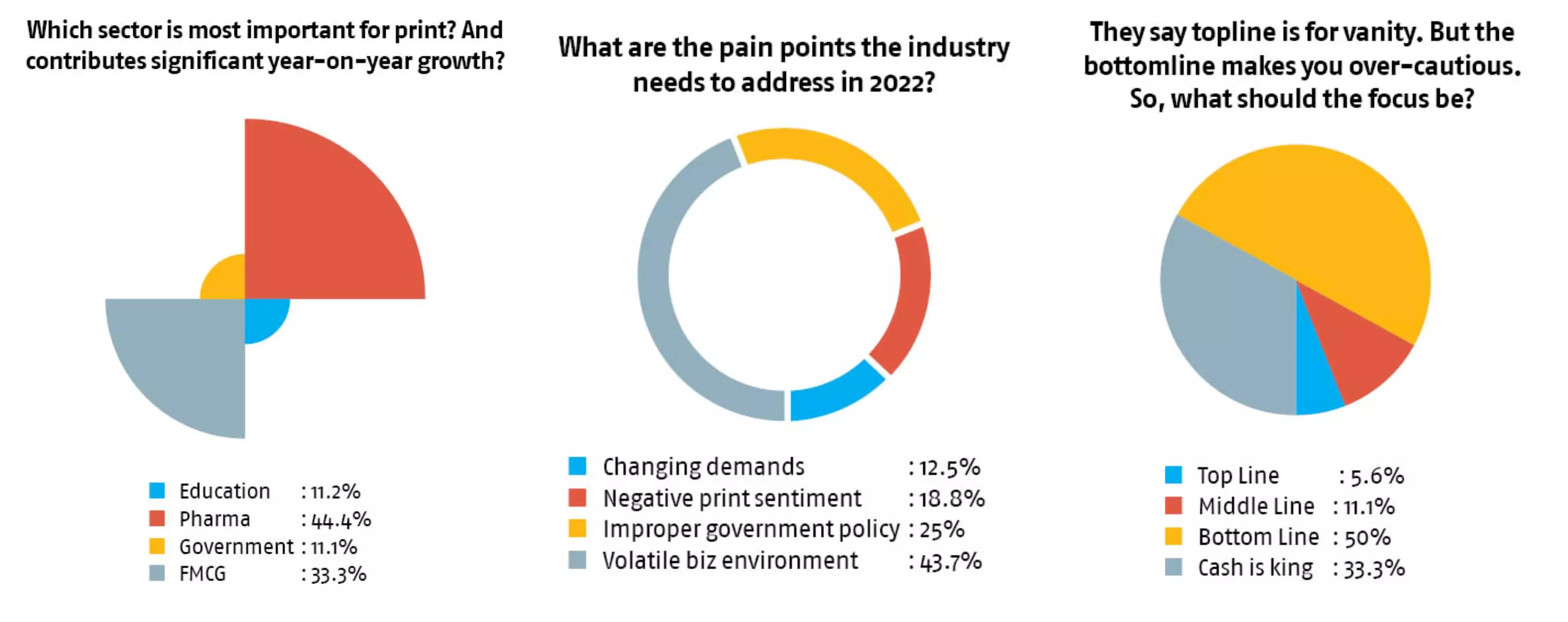
This year, Kolkata’s CDC Printers invested in book printing with web offset presses and added 40% capacity. It added 75% capacity in sheetfed-based book printing segment. “It will probably take a quarter or two to settle down,” says
Manu Choudhury, director at CDC Printers. “With this we are expecting around 40% growth this year. We are planning to add another packaging line by next year, thereby doubling its capacity. Beyond these two years we haven’t given much thought, but in these two years we are definitely growing at 40%.”
Likewise, K Selvakumar of Lovely Offset shares, “We will focus on replacing our old workhorses for the next two years and increase the built-up area in our factory in Sivakasi. We will focus on increasing our book binding capacities and look forward to acquiring technologies to widen our product range.”
While Saket Kanoria, managing director at TCPL says that his company always strives to maximise its potential. He believes that five years is too long a horizon to target a growth number. Meanwhile, Bipin Tanna, chairman of Printmann Group is looking at a 4x growth in four years. “Our growth vision is – having a pan-India manufacturing presence.”
Cushrow Jassawala of Thomson Press, however, says that he would de-bottleneck and eliminate constraints in their value chain – internal and external. “We will attempt to be a cash positive business. Thomson Press has invested in an eight-colour RMGT press with state-of-the-art in-line colour control system, with auto plate mounting and LED lamps for curing ink on matte paper.”
Jassawala adds, “Automation also includes low-cost automation in post-printing operations, in packing, and in reducing manual operations where investment in large machines is not feasible. Above all, automation includes the use of ERP in the shop floor and support processes, it includes getting the latest workflow in pre-press.”
Label market at double digit
Recently, PrintWeek had a conversation with Harveer Sahni of Weldon Celloplast. He said, “The Indian label market has been achieving double-digit growth. I am sure the growth of all PSA labels in India is in excess of 15%. And out of this, 5% of the total market is digitally printed labels.” Sahni says his personal guesstimate is that the digital label market is growing at a CAGR of 17-20%.
Sahni’s take is that the Indian industry grew in and around the metros, so the printers in these centres have had a head start. “Thereafter, it has spread to the interior parts of India.”
However, Sahni adds, “The business size does not match those who have been present in the market for a long time. Yes, it is true the numbers are growing, but the talent pool of the label industry remains in the golden triangle.”
Sahni further adds, “When we scrutinise the topline, the number is confirmed to be 70 firms. These are factories with multiple lines and boast of international label presses. If you consider those firms with multiple Indian and Chinese presses (not single press owners), the number may swell to 100-125.”
Then there are the smaller firms that have mushroomed in the smaller towns, and these may add up to 1,000-2,000 firms. Sahni believes, “The base has not grown exponentially despite the growth in the market size of labels.”
This is because the new entrants at grassroots levels or those migrating from the offset print sector or flexible packaging are entering labels. These firms have one or two presses. “In the next few years, we will see these numbers being boosted; and that’s how the top line will grow,” he predicts.
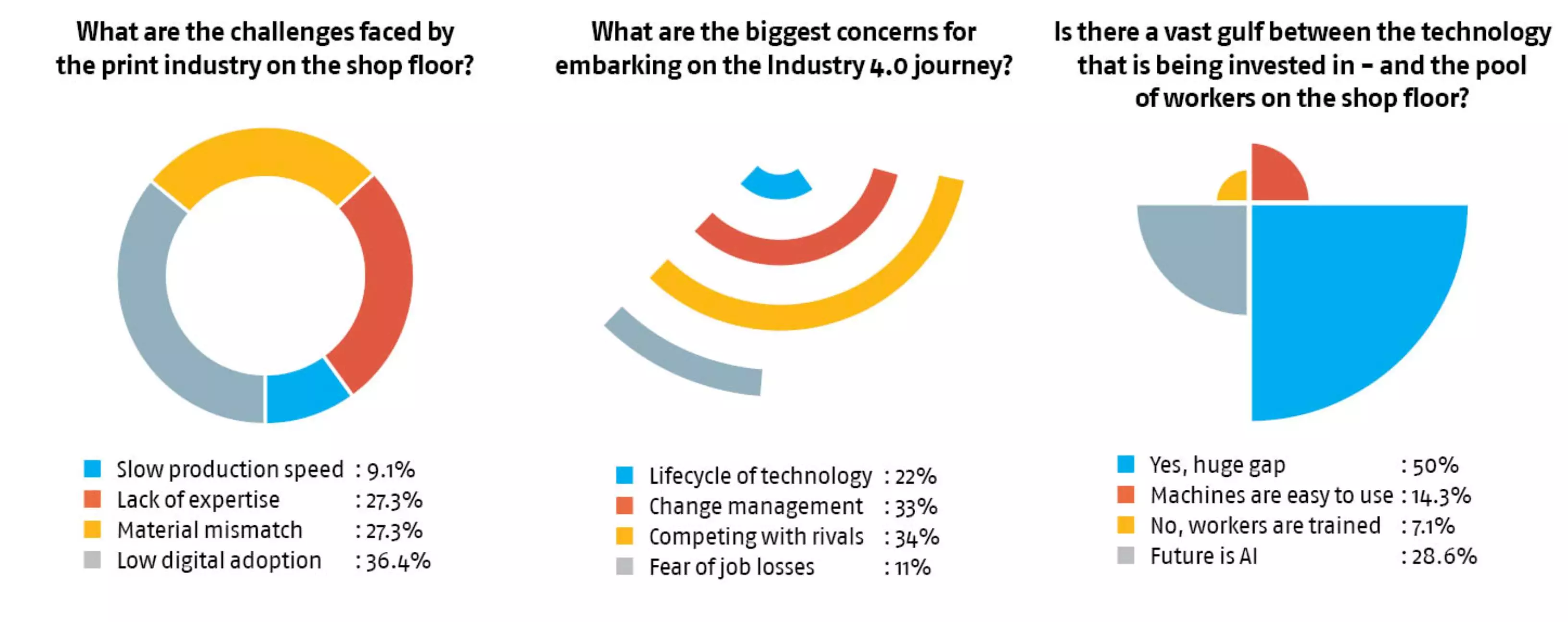
The digital story
The overall run rate of digital production engines is around 1,500 per year. According to PrintWeek’s estimate, there are around 4,000 digital presses in operation in India, 1,000 of which are large and medium, while 3,000 are small.
Sharing his view on digital print business, Puneet Datta, senior director, Canon India, said, “In this era of Covid-19, every customer wants the maximum return and security on any investment. One way to do that is to buy newly launched products that ensure the latest innovations and technologies in their print environment. Keeping this in mind we have launched products in narrow format (ImagePress) as well as wide-format (ImagePrograf) domain.”
Monotech Systems, which represents Ricoh in India, has announced multiple installations in the last 18 months. TP Jain, managing director of Monotech, says that the last two years of the pandemic have taught three things — change is constant, technology is a big enabler, and diversification is the best hedge against disruption. “In this context, digital equipment needs less manpower. Even support can be extended remotely, making this useful in troubled times,” he adds.
The other area that has seen a buzz within the digital segment is post-print digital machines such as slit cut perforated, any type cutter, and perfect binders. According to PrintWeek estimate, this market is around Rs 80-crore.
Manish Gupta of Konica Minolta says that this market has been increasing over the past few years. “The biggest increase is on digital die-cutting – table top machines. Digital embellishment devices installed, including small and big would be around 25.”
According to PrintWeek, of the 1,500 digital presses installed, about 100 opt for post-press finishing in the range of Rs 15- to 18-lakh. Agreeing with the numbers, a key player in the digital post-press finishing devices, says, “With business card business diminishing, menu cards digitised and high-end brochures limited to real estate, on-demand packaging of ultra small format and labels is growing, hence expect around 100 engines of cutting tables with average Rs 15-20 lakhs ticket size.”
We peg the number of potential buyers of embellishment devices in the Rs 1-crore bracket to 20. “The growth trajectory is at its highest. Expect 50 installations by 2024.
Digital presses for labels
Digital presses in the labels segment is something that has been keenly watched.
According to a WhatPackaging? estimate, there are 63 digital presses label presses installed in India. HP Indigo accounts for 29 presses, which include two 25K that find usage both for labels as well as flexible packaging and one HP Indigo for lamitubes; Konica Minolta has 10, Monotech eight, Domino three, Xeikon two, Durst two (one new at Astron Packaging and other two refurbished), Screen two, and Epson with five machines.)
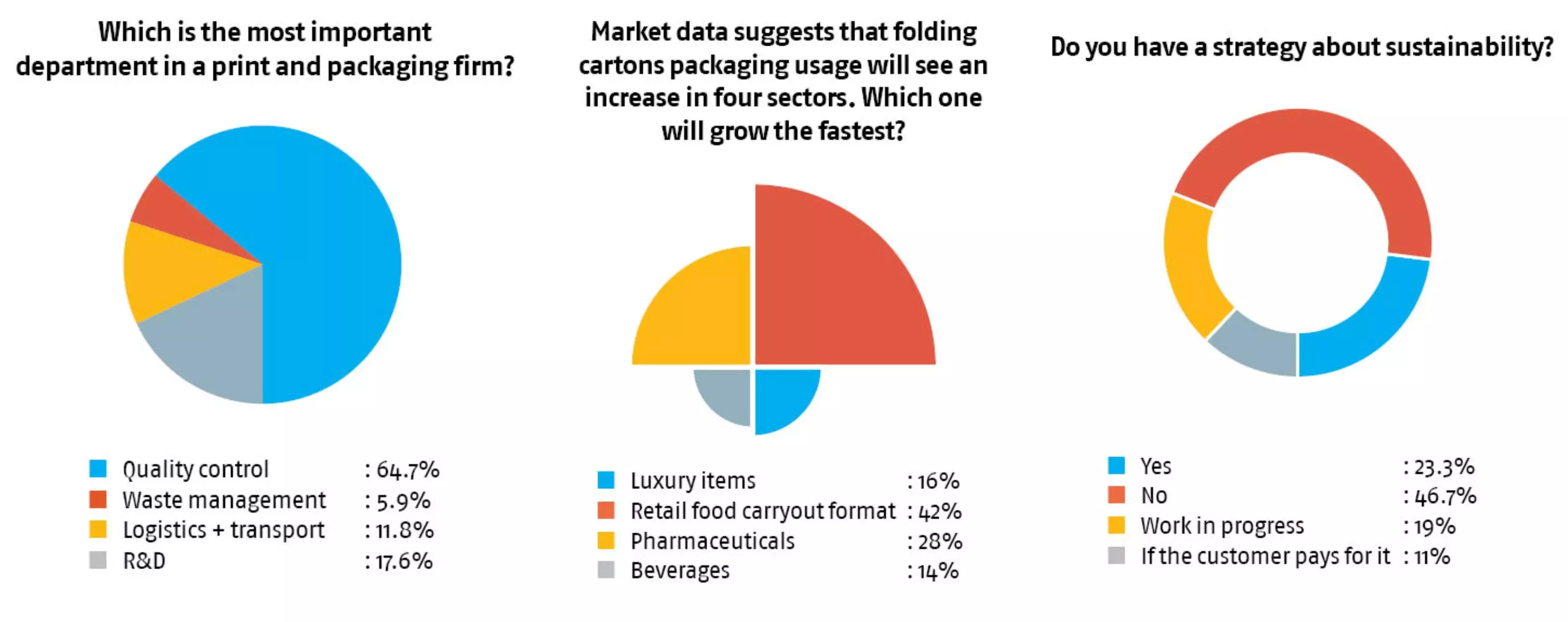
Most of the HP Indigo customers do both labels and cartons.
However, Sahni of Weldon Celloplast says, “Digital roll label presses have registered a compounded annual growth rate (CAGR) of 18% vis-a-vis the number of press installations.”
“If we consider just the numbers, HP has 32% share of the installations, Konica Minolta 20%, Monotech 16%, Durst 8%, Domino 6%, Epson, Screen and Astronova account for the balance,” says Sahni, whose survey showed there are 51 digital label presses installed in India.
Sahni says that this is not a real indicator of the quantum of investment by label printing companies in digital printing technology. “The total investment in digital roll label equipment is more than Rs 215 crores or about USD 28-million. HP being the most expensive equipment of the lot, accounts for a whopping 66% of the investment made in value while all others remain less than 10%.”
Books and the state of education
Over four-crore books have been distributed for the 2022-23 academic session, says the Education Ministry. During a written reply to a question, the union minister of state for education Annapurna Devi provided the information in the Parliament. The Indian Postal Services delivers the online-ordered textbooks to customers at their doorsteps.
“The NCERT has informed us that there is no reported shortage of textbooks in the country. They have informed that 4.25 crore textbooks for the academic session 2022-23 have already been distributed through 950 empanelled vendors all over the nation,” the minister said.
As per the information, 4.25 crore textbooks for the academic session 2022-23 have already been distributed through 950 empanelled vendors all over the nation.
Rajeev Vohra of Repro India says, “I think in terms of print and publishing, since schools have now opened up, the volumes have come back to pre-Covid levels in the K-12 segment. In trade, I think the shift towards eCommerce consumption has led to ever growing volumes. However, in both K-12 and trade, the increase in prices of paper and more so the limited availability has been a challenge for all of us.”
He adds, “For the past many years, we’ve all worried about eBooks and other formats of content consumption and its impact on the sale of physical books. However, I’m glad to see the sales and volumes of printed books increasing across segments year-on-year for the past two to three years.”
This is the reason Quarterfold Printabilities, over the last two years, has invested close to USD 6-million on infrastructure, web and sheetfed printing machines as well as finishing lines. As Nilesh Dhankani of Quarterfold Printabilities says, “This is because we can capitalise on the ever-growing requirements of our customers.” This financial year, Quarterfold will be adding a 32-page web press, 16-page web press, two Komori sheetfed presses along with a warehousing and fulfilment centre.

Ravi Shroff of Nutech is not far behind. The Faridabad-based factory has invested in a four-colour RMGT Series 9 press, a five-colour Heidelberg SM52 press, a TechNova Thermostat T9 CTP, along with additions across the bindery.
Shroff says, “The last quarter was mainly due to pent-up demand from the Covid years along with last minute orders mainly from the school book publishers, but it does seem there is an uptake in demand of books across segments and the demand should continue over the next 12 months.”
Meanwhile, the National Achievement Survey (NAS) 2021 Report has alarming news. The report assessed 3,40,000 students of 1,18,000 schools in 720 districts.
According to the survey report, the national average percentage of students for class third was 59%, which declined by 10% points to 49% in class fifth. It further declined to 41.9% in class eight and then 37.8% in class 10. The performance recorded a decline in almost all subjects, said the survey.
For instance, the mathematics score nationally was 57% in class third, dropping by almost 10% points to 44% in fifth, and to 36% in class eighth, and 32% in class 10.
Basically, the literacy and numeracy skills of school students in India have worsened across subjects and grades.
Can we remedy the situation?
The counterfeiting conundrum
According to the data released by the National Crime Records Bureau, 13,604 fake currency notes of Rs 2,000 denomination were detected in the banking system in 2021-22. In 2020, 2,44,834 fake notes of Rs 2,000 denomination were seized, as against 90,566 notes in 2019.
According to the RBI annual report in May 2022, the number of fake currency notes of Rs 500 denomination detected by the banking system has doubled to 79,669 pieces in the fiscal 2021-22 over the previous year. The number of counterfeit notes of Rs 2,000 denomination detected in the system was 13,604 pieces during 2021-22, up 54.6% from the preceding financial year.
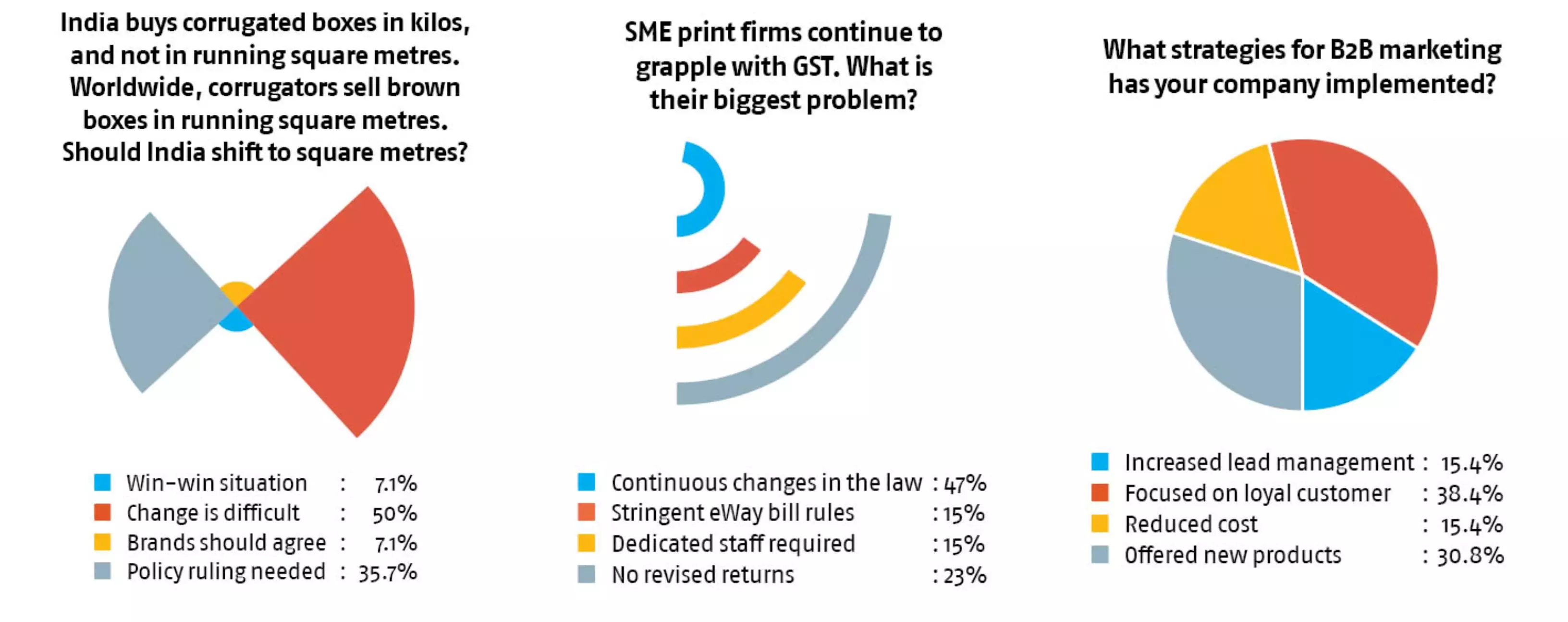
After declining in 2020-21, the total number of Fake Indian Currency Notes (FICNs) of all denominations detected in the banking sector increased to 2,30,971 pieces from 2,08,625 pieces in the previous fiscal. During 2019-20, the FICNs detected stood at 2,96,695 pieces.
In a recent report, the police raided a printing factory operating in Bikaner, where counterfeit notes were being printed on simple inkjet printers. The paper on which the notes were printed was sourced from open market, and the culprits learned the art of printing fake notes through a software by taking online training.
The plastic ban trickle-down
Break Free From Plastic, in its brand audit about India, stated that 70% of the 1,49,985 pieces of plastic audited were marked with a big consumer brand. The audit said, “plastic pollution was caused by products from the top brands.”
Kotak Institutional Equities released a report on the ban, which claimed that the current ban will not affect FMCGs, but the restrictions on sachets/ pouches/ wrappers/ laminated tubes could impact their profitability.
In 2015, citing a FICCI report, we had reported why banning FMCG packaging would affect the processed food industry by Rs 90,000-crore per annum, amounting to 72% of the industry.
As Ashi Datta (research associate) and Swathi Seshadri (team lead, Oil and Gas Team at Centre for Financial Accountability) have argued recently, “But a ban on FMCG packaging would have a significant impact on this entire chain.” Which is why, “the limited ban on some SUPs will not impact the big players who will continue to produce for the non-FMCG category. Those significantly impacted would be some of the 30,000 MSME units that manufactured the plastic products on the banned list”.
FMCG blues
As per a WhatPackaging? poll, the biggest worry for the FMCG brands right now is – food inflation: 11%; supply chain disruption: 27%; price rise due to recent GST rates for packaged goods: 49%; and impact of sustainability legislation: 13%.
Experts attribute a dip in FMCG sales due to products becoming costlier as the FMCG majors have persisted with price hikes even though input prices cooled off in June. The sharpest fall of 15.5% was seen in the personal care category, possibly due to down-trading.
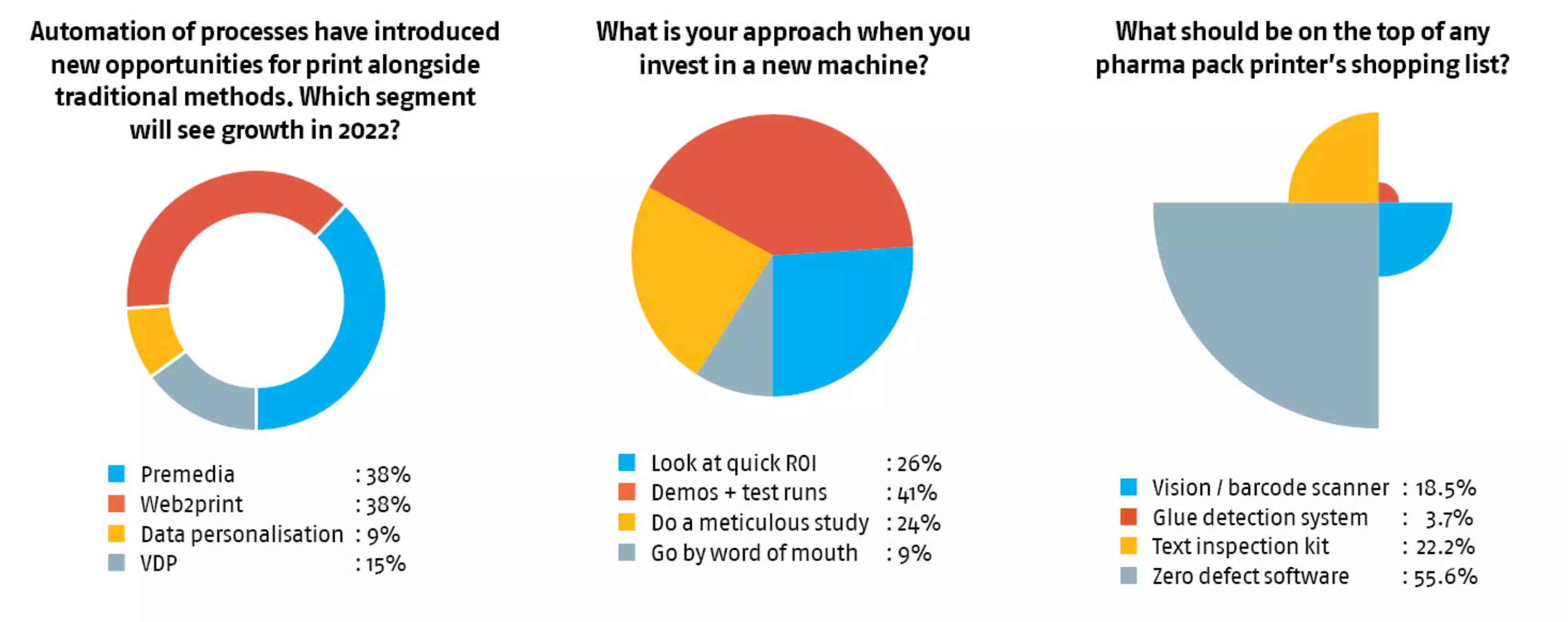
Sales of FMCG declined by 3.7% in value terms, in the first fortnight of July, as compared with a 6.4% growth recorded in the same period of June.
The consumer data intelligence firm Bizom says packaged foods, home care and confectionery saw single-digit declines. Bizom adds that the rural consumption wheel is moving slowly in July 2022.
FMCG stocks have seen a dip because of price hikes to offset huge commodity inflation. The war between Russia and Ukraine has exacerbated the situation for FMCG makers as they expect a rise in the prices of wheat, edible oil and crude.
According to Kotak Institutional Equities (KIE), soap brands increased prices by 3-20% during June versus April. Detergents, too, saw high single-digit price increases across brands. And in toothpastes, SKUs saw a price hike
by 5-14%.
As per a report in WhatPackaging?, the Indian FMCG industry is expected to grow at the rate of 27.9% with the rural FMCG market being projected to grow at a CAGR of 14.6% to notch up USD 220 billion
by 2025.
So, what next?
The India story as per P Narendra of Pragati is bullish. He says, “India is expected to be the world’s fifth largest consumer market by 2025. The packaging industry is the third largest after food and energy and it’s worth USD 917 billion (in 2019), with 2.8% CAGR - of which the Indian share is 4%.”
He mentioned that the sector growth will be 22-25% CAGR (as per Packaging Industry Association of India). He pointed out how the packaging industry grew at 18% CAGR between 2015-2020; and it was USD 31.7 billion in FY 2015 and USD 72.6 billion in FY2020 (Assocham-EY study).
But there are some serious issues that plague the print market. The lack of industry status is a huge stumbling block as per a poll conducted by PrintWeek.
We asked approximately hundred captains of the industry about what they would like to tell the Minister of Finance and Corporate Affairs of India, if they happen to meet her in an elevator. The response was as follows:
● Make government dealing easy: 31%
● Industry status for printing: 52%
● Export benefits should increase: 12%
● Remove dividend tax: 5%
Ravi Shroff of Nutech says, “SME businesses need real support if one truly wants the economy to thrive, and the support being extended by the government so far is not enough especially in the books export segment.”
In addition, to a tepid government response, there are three major concerns about where the money is coming from, what the profitability outlook is, and whether there is a collective plan for sustainability. Till such a time as an answer is found, what does one do?
As TCPL’s Kanoria says, “The main point is to look after your working capital and keep a healthy balance sheet and not depend on one source.”


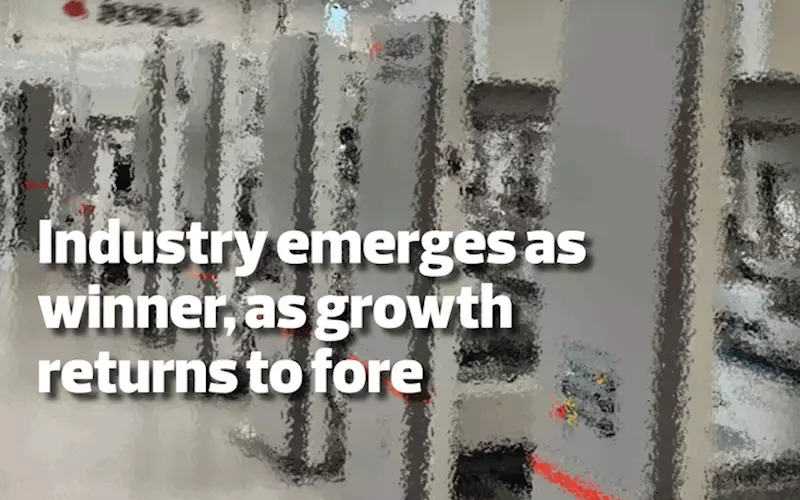








 See All
See All